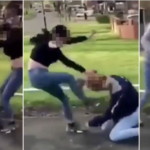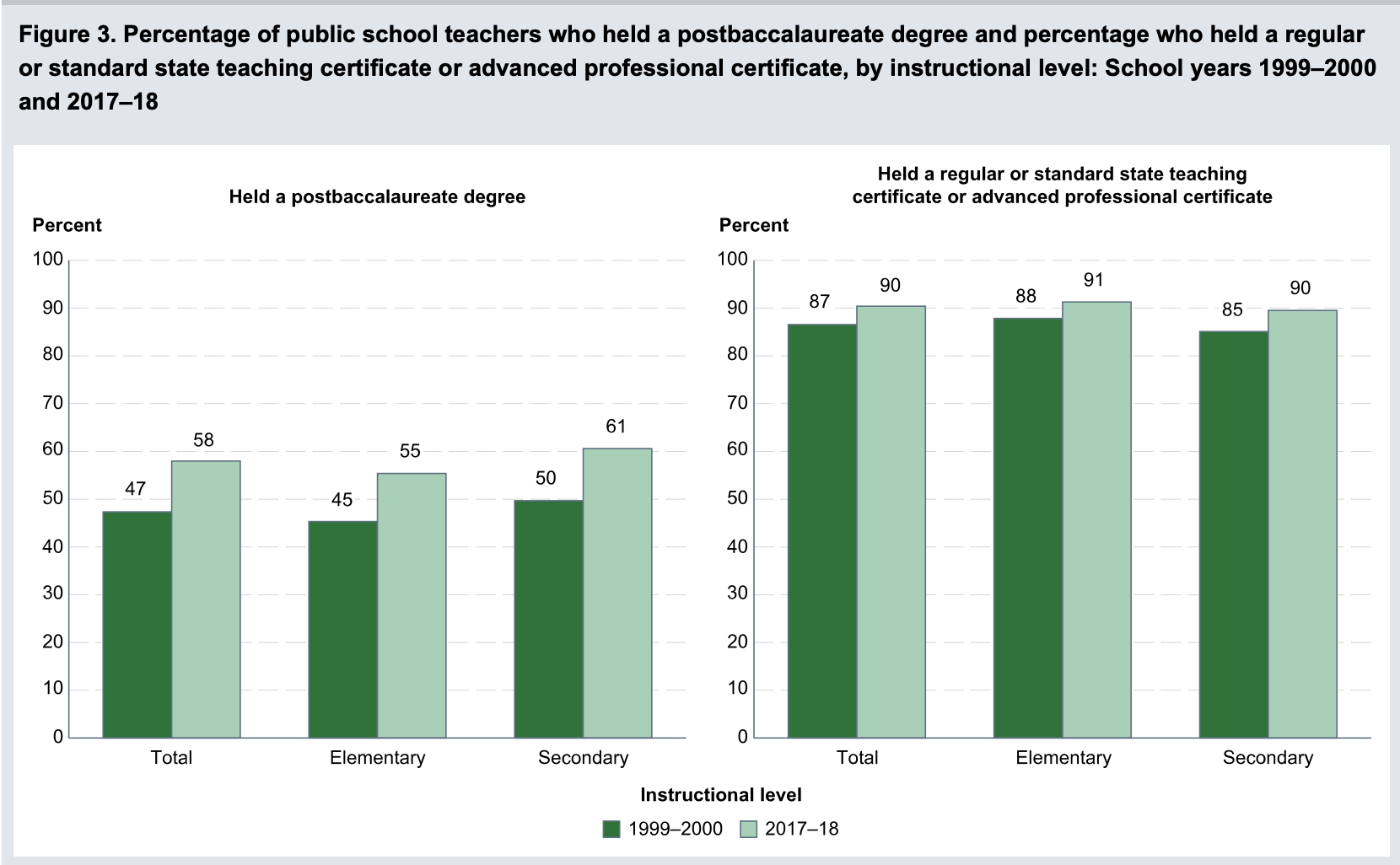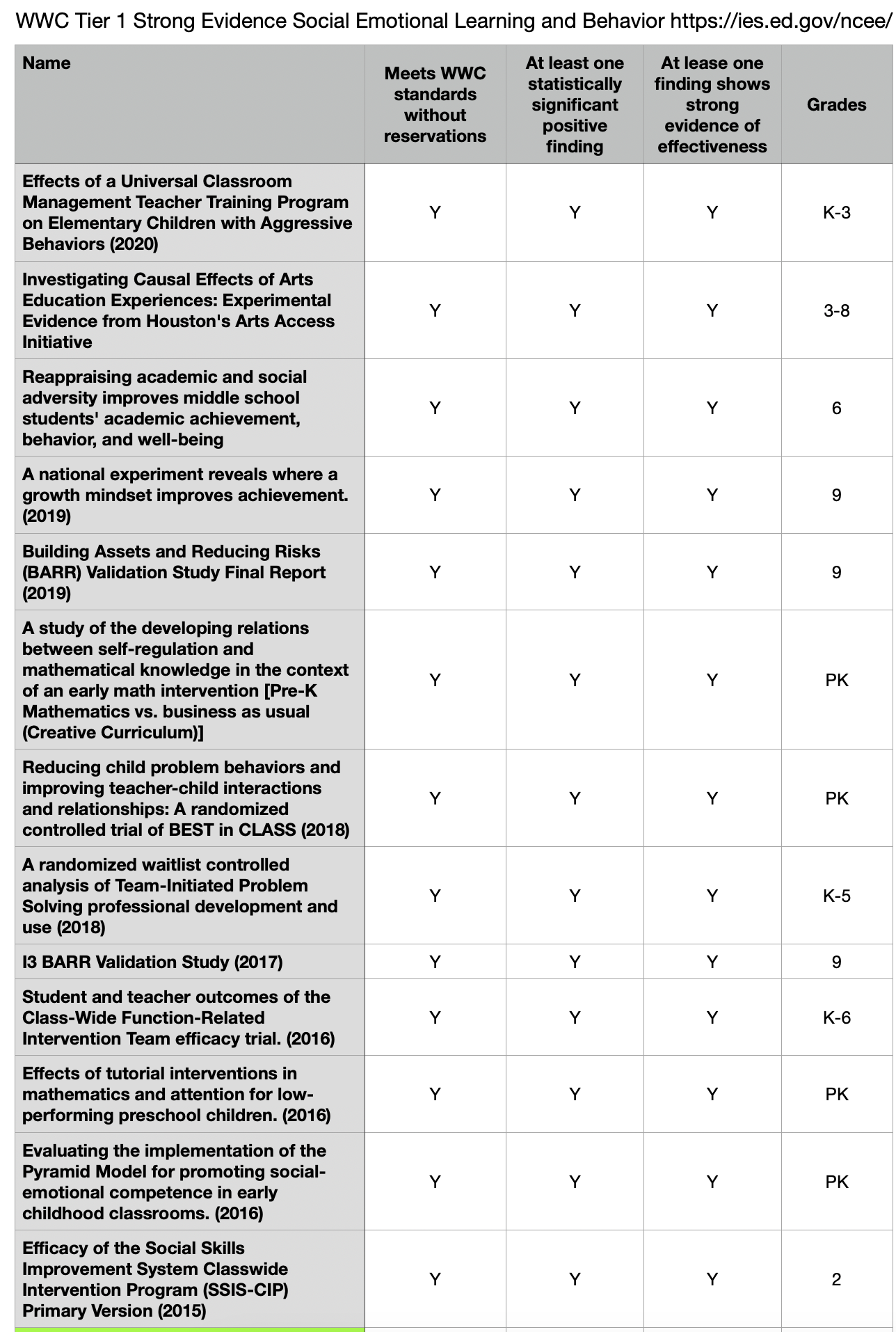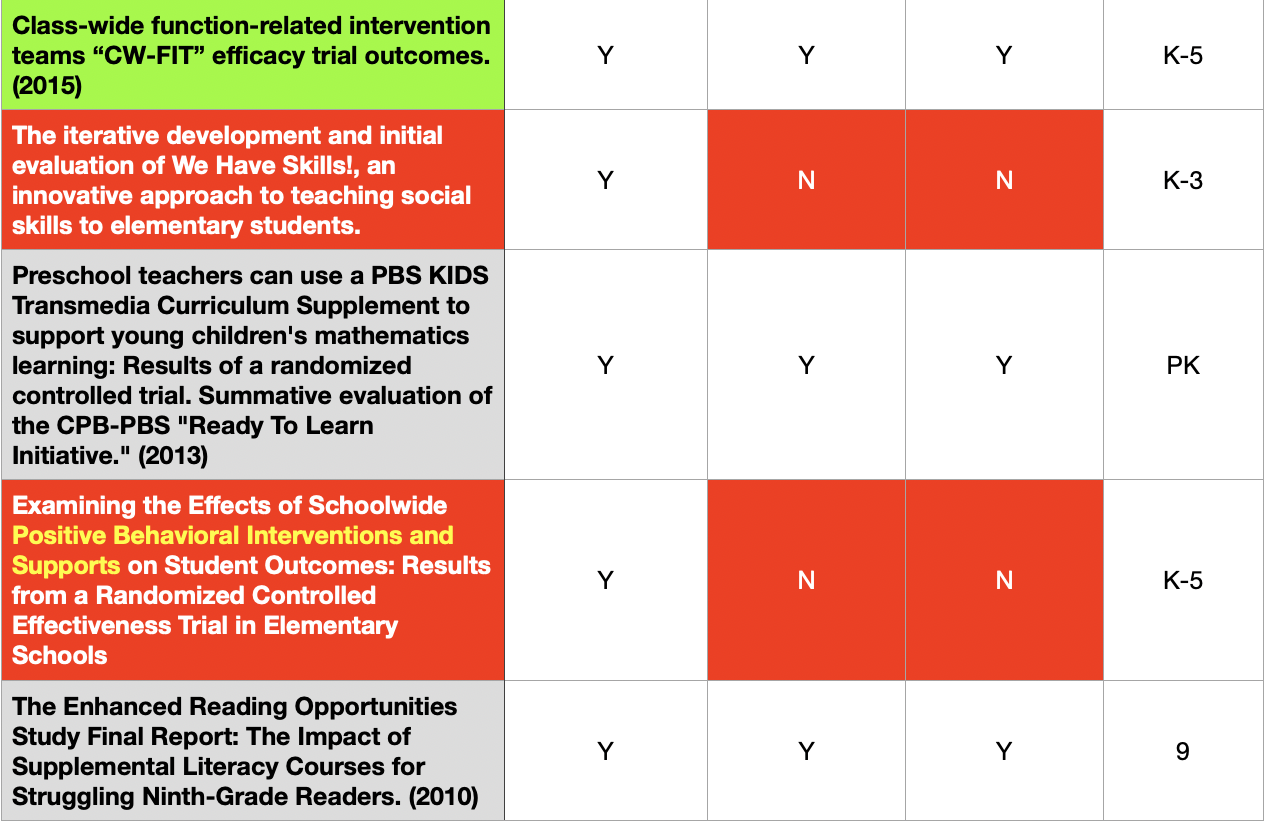
by James C. Sherlock
I have found both surprise and confusion among some readers when I use the term “valid studies” in discussing the avalanche of doctoral theses and studies produced annually by schools of education.
The federal Institute for Educational Sciences established What Works Clearinghouse (WWC) in 2002 to sort the wheat from the chaff for school divisions and state education agencies before they choose a particular intervention to pursue to solve a problem.
Since I discovered WWC a few years ago, I check it in my own research in an attempt to make sure I don’t go down a rabbit hole with some study that is flawed.
On the subject of Positive Behavioral Interventions and Supports (PBIS), WWC shows in assessments of interventions to solve problems of social-emotional learning and behavior management:
- strong evidence that PBIS offers no measurable improvement, and
- that there are alternative approaches to PBIS that do show strong improvement.
One study of PBIS, conducted in Maryland (which will come up again later), was the only one ever to meet strict WWC standards of quality and strong evidence.
Strong evidence from that trial — in 2010 — found that PBIS did not work to improve social-emotional development and behavior in K-5 children.
There were no positive findings. None.
Yet a very large number of Virginia’s largest school divisions use it anyway.
And all of them started using it after that 2010 study.
But then again, so did Maryland.
So what does work? So does anything make it through this screen with a rating of strong evidence to improve student behavior? The answer is yes.
And the list is long.
Filter it on the left column for Tier 1 Strong Evidence and again for Social- Emotional Learning and Behavior. You will find that there are 18 strong confidence studies that meet WWC standards without reservations.
Only two of those show no positive findings.
There is strong evidence that PBIS has no positive value in SEL and student behavior, which are its reason for being.
On the other hand, the evidence for Class-wide function-related intervention teams “CW-FIT” efficacy trial outcomes in grades K-5 was astonishingly strong, very close to the maximum possible improvement in behavior compared to the control group.
Those positive options are each demonstrated as positive for Black kids.
Do teachers in your local school division use CW-FIT? Or PBIS? Or, perhaps both. CW-FIT can be executed in a PBIS framework.
Overview of WWC. The best way to get an overview of what WWC does and how it does it is to go to WWC’s Evidence Tiers and WWC Ratings page.
The four YouTube videos offered there are sufficient to guide your use of the system.
You will see that WWC standards are highly complex and technical, but are used to achieve and to offer confidence in interventions into educational practice to states and individual school divisions.
Perhaps the most valuable is the video How States Can Use the WWC to Inform Evidence Use under ESSA. I recommend it to school divisions as well.
Graduate Schools of Education. There are few professions with as many practitioners holding post-graduate degrees as education.
See the IES National Center for Educational Statistics chart below.

There are at least four major problems with that:
- Teachers and administrators are being taught some educational interventions that have been scientifically validated but others that have not;
- The General Assembly and VDOE have in the past taken their cues from the Graduate Schools of Education in legislation, guidelines design and program financial support;
- Those institutions have feathered their own nests with the insertion of graduate school training requirements into legislation and VDOE policy for a lot of useless nonsense; and,
- In the case of PBIS, they played and continue to play, from the bottom of the deck, the race card to get it widely accepted by progressive school boards.
The ed schools are utterly relentless on the subject of PBIS.
Professor Catherine P. Bradshaw was recently appointed as Senior Associate Dean for Research & Faculty Development at the UVa School of Education and Human Development.
She heads a Preventive Interventions Team: Collaborative Research on Engagement and Wellbeing whose major research project is MTSS-B/PBIS/SEL.
Much of this work has been conducted in close partnership with the Maryland State Department of Education and the PBIS Maryland initiative. A related line of research focused on school policies and scale-up of PBIS in Maryland and a focus on implementation supports for PBIS.
Maryland again. “Scale-up of PBIS in Maryland.”
The same Maryland where the 2010 study was conducted that was assessed by WWC to provide strong evidence that PBIS was of no positive value.
PBIS is the ed schools’ most prominent play of the race card.
It was founded specifically to break what, led by the ed school at the University of Oregon, the education establishment discovered to be “the school-to-prison pipeline” for Black students. Itself an artifact of course, of “systemic racism.”
With those terms of reference nothing, not even the fact that WWC has found strong evidence that it offers no positive benefits, will deter ed schools – or some bullied and uninformed legislatures and school divisions – from supporting it.
The race card works … and the pea is never under the shell.
I hope WWC gives the General Assembly, VDOE and school divisions the tools to do their own research before buying pigs in pokes that the ed schools are more than occasionally selling.
And won’t ever stop selling.
Teachers unions, if they wish to earn their dues, may want to consider workplace safety and ask school divisions to drop PBIS in favor of initiatives proven to actually work and lower the violence against their members.
And help the kids at the same time.



Leave a Reply
You must be logged in to post a comment.